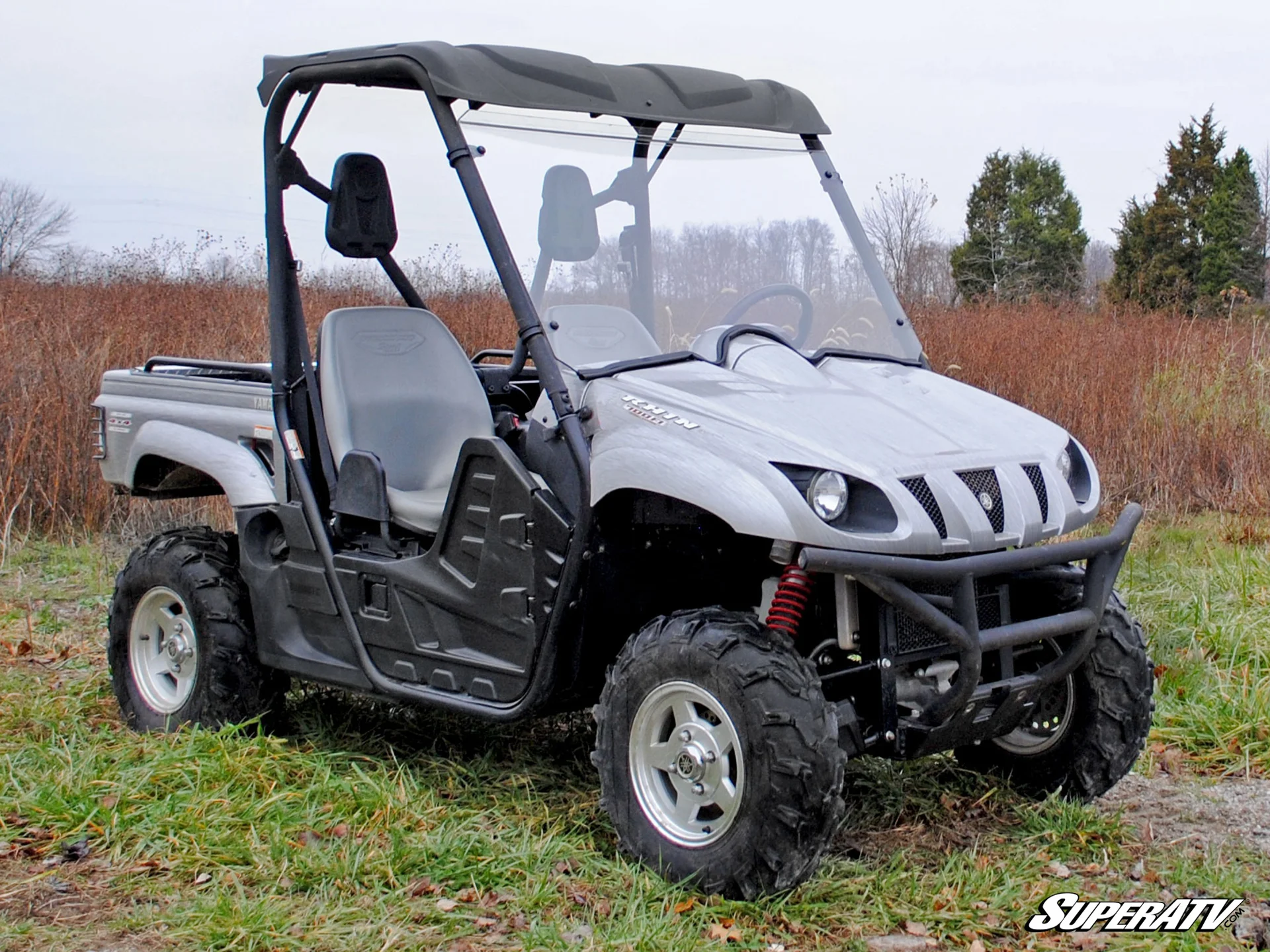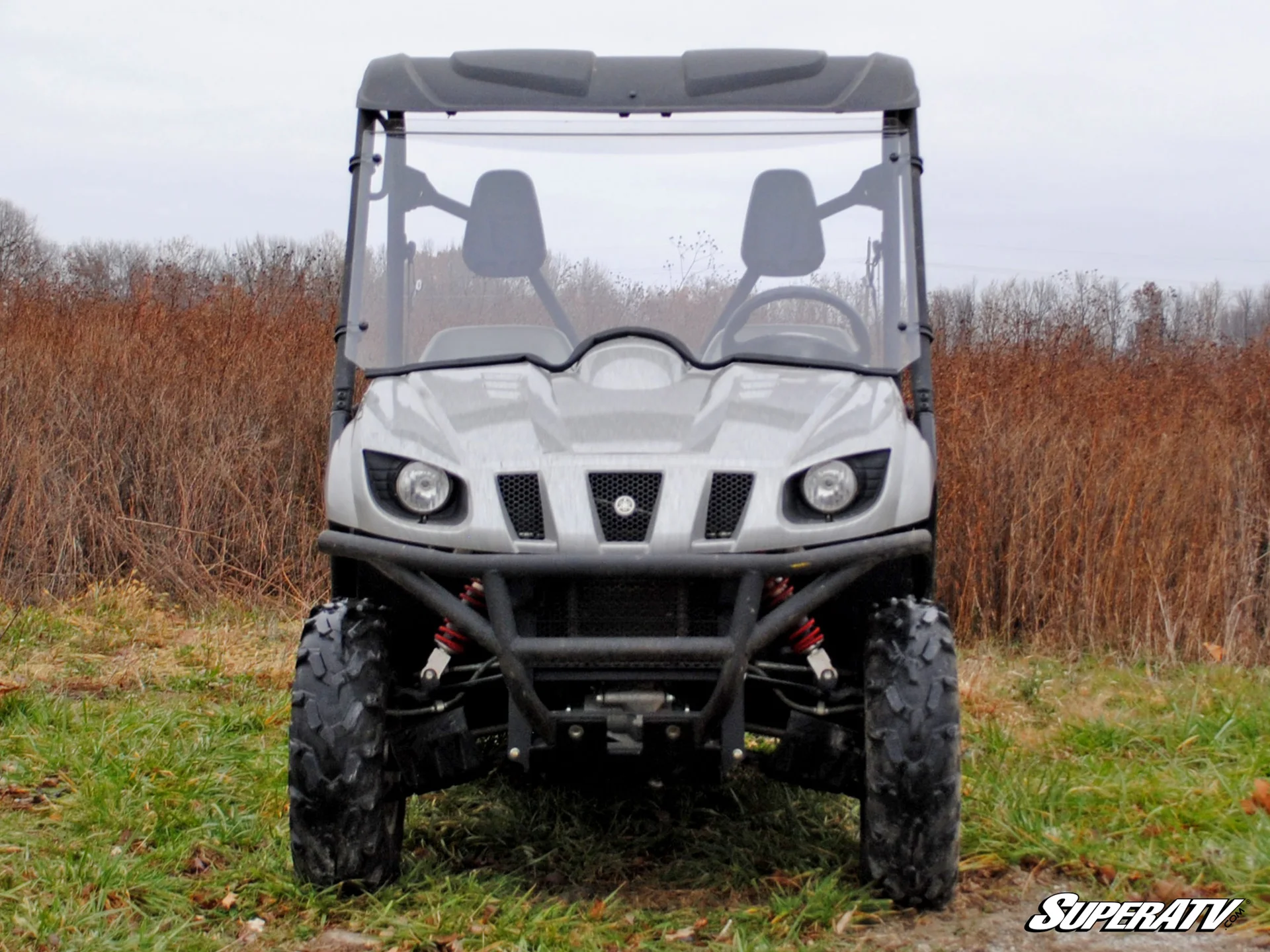Keeping your Yamaha Rhino UTV in top shape is essential for ensuring its longevity and optimal performance in addition to customizing your vehicle. Regular maintenance not only enhances your vehicle’s reliability but also prevents costly repairs down the road. As a Yamaha Rhino owner, you must stay proactive with your UTV maintenance routine. From checking fluid levels, tire pressure, fuel filter and inspecting the braking efficiency to cleaning the air filter and tightening loose bolts, these essential maintenance tips will help you keep your Yamaha Rhino running smoothly. Discover the best practices and expert advice to maintain your Yamaha Rhino UTV and enjoy uninterrupted adventures.

Inspect Your UTV Before Riding
Inspecting your Yamaha Rhino UTV before each ride is crucial for safety and performance. A thorough pre-ride inspection helps identify potential issues that could lead to breakdowns or accidents. Start by checking the tire pressure and tread to ensure optimal traction. Examine the brake pads for wear and proper function, and inspect all fluid levels, including engine oil, coolant, and brake fluid. Look for any loose bolts or damaged parts, and make sure the lights and signals are working correctly. By performing these routine inspections, you can maintain your Yamaha Rhino’s smooth operation and ensure a safe and enjoyable riding experience.
- Check tire pressure and adjust according to the manufacturer’s recommended pressure for optimal traction and tire life.
- Ensure proper brake fluid level and brake pads for safe and efficient braking.
- Inspect battery connections and electrical connections for any signs of wear or damage.
Engine and Performance
Ensuring the engine and performance of your Yamaha Rhino are in top condition is crucial for a smooth and powerful ride. Regularly check the engine oil levels and change the oil as recommended by the manufacturer to keep the engine running efficiently. Inspect the spark plugs for signs of wear and replace them if necessary to maintain optimal ignition performance. Additionally, clean or replace the air filter regularly to ensure proper airflow, which is vital for the engine’s performance. Monitoring and maintaining the cooling system will prevent overheating and extend the life of your Yamaha Rhino’s engine. By following these engine maintenance tips, you can enhance your Yamaha Rhino’s performance and enjoy a reliable and thrilling off-road experience.
Oil Changes and Fluid Checks
- Change oil every 75 hours/3 months/750 miles, and swap out the oil filter each time, as recommended by industry professionals.
- Use good-quality motorcycle/ATV oil and a factory Yamaha oil filter to ensure optimal performance and prevent premature failure.
- Check engine oil levels regularly and top off as needed.
Air Filter Maintenance
- Clean air filter or replace regularly to ensure a clean air supply to the engine.
- Inspect for signs of damage or excessive dirt buildup.
Cleaning and Maintenance
Proper cleaning and maintenance of your Yamaha Rhino are crucial for preserving its performance and extending its lifespan. Regularly washing your UTV helps remove dirt, mud, and debris that can cause wear and tear on vital components. Focus on cleaning the undercarriage, wheel wells, and engine bay to prevent buildup that could lead to mechanical issues. Additionally, ensure you lubricate moving parts and check for any signs of rust or corrosion. By incorporating these cleaning and maintenance practices into your routine, you can keep your Yamaha Rhino UTV in pristine condition and ready for any adventure.
Keep Your UTV Clean
- Regularly clean your UTV to prevent dust and dirt buildup, which can affect performance and longevity.
- Use gentle, non-abrasive cleaning products to avoid damaging the vehicle’s finish.
Battery Care
- Regularly check and maintain your electric UTV’s battery for optimal performance.
- Proper care extends the life of your battery.
Safety and Inspection
Regular Inspections
- Regularly inspect your UTV for signs of wear or damage, including brake pedal, spark plug, tire pressure and suspension components.
- Perform routine maintenance tasks and check if filters are functioning properly to prevent costly repairs and downtime.
Brake and Suspension Maintenance
- Inspect brake pads and rotors regularly and replace as needed.
- Check suspension components for signs of wear or damage and replace as needed.
Accessories and Upgrades
Enhance your Yamaha Rhino’s functionality and performance with a variety of accessories and upgrades. Here are some popular options to consider:
- Winches: A winch is an essential accessory for off-road enthusiasts. It can help you get out of tricky situations and is invaluable for towing and recovery operations.
- Roof and Windshield: Adding a roof and windshield can provide protection from the elements, making your rides more comfortable and enjoyable in all weather conditions.
- LED Light Bars: Improve visibility during nighttime rides with high-quality LED light bars. They offer powerful illumination, ensuring you can see and be seen on the trails.
- Skid Plates: Protect the underside of your Yamaha Rhino from rocks and debris with durable skid plates. They provide an extra layer of defense against potential damage.
- Storage Solutions: Maximize your UTV’s storage capacity with cargo boxes, bed extenders, and other storage solutions. These accessories help you carry more gear and keep your equipment organized.
- Performance Upgrades: Boost your Rhino’s performance with upgrades like high-performance exhaust systems, suspension kits, and tuning modules. These enhancements can improve power, handling, and overall ride quality.
By investing in these accessories and upgrades, you can tailor your Yamaha Rhino to better suit your needs and preferences. Whether you’re looking to enhance performance, increase comfort, or add functionality, there’s a wide range of options available to help you get the most out of your UTV.
Essential Accessories for Your Yamaha Rhino
- Consider upgrading to premium aftermarket parts and accessories, such as air filters and oil filters, for optimal performance and durability.
Troubleshooting Common Issues
When it comes to troubleshooting common issues with your Yamaha Rhino, knowing what to look for can save you time and money. Here are some of the most frequent problems and how to address them:
- Engine Problems: If your engine is hard to start or runs poorly, check the spark plugs, fuel filter, and air filter. Dirty or faulty spark plugs can cause misfires, while a clogged fuel filter or air filter can restrict flow and affect performance.
- Battery Issues: A dead or weak battery is a common issue. Ensure the battery connections are clean and tight, and check the charge regularly. If the battery is old or frequently loses charge, consider replacing it.
- Overheating: Overheating can be caused by low coolant levels, a faulty thermostat, or a clogged radiator. Regularly check the coolant levels and radiator for debris. If the thermostat is malfunctioning, it might need to be replaced.
- Brake Problems: If you notice a decrease in braking performance, inspect the brake pads and rotors for wear. Also, check the brake fluid levels and top up if necessary. Regular maintenance of the braking system is crucial for safety.
- Suspension Issues: Unusual noises or a rough ride can indicate suspension problems. Check the shocks and struts for damage or wear and ensure all bolts and mounts are secure. Replacing worn suspension components can restore ride comfort and handling.
- Transmission Troubles: Difficulty in shifting gears or slipping gears can be a sign of transmission issues. Check the transmission fluid level and condition. If the fluid is low or dirty, a fluid change or top-up might be needed.
By addressing these common issues promptly, you can keep your Yamaha Rhino running smoothly and avoid more significant problems down the road. Regular maintenance and early troubleshooting are key to the longevity and reliability of your UTV.
Common Yamaha Rhino Problems and Solutions
- If you notice problems such as difficulty shifting gears, grinding noises, or slipping gears, try troubleshooting steps such as checking the transmission fluid, filter, and gears.
- If you experience issues such as a dead battery, malfunctioning lights, or electrical shorts, try troubleshooting steps such as checking the battery, fuses, and wiring.
Storage and Inactivity
Proper storage and handling during periods of inactivity are crucial for maintaining your Yamaha Rhino in top shape. Before storing your UTV, ensure it’s thoroughly cleaned to remove any dirt or debris that can cause corrosion.
Preparing Your UTV for Storage
- During periods of inactivity, take steps to preserve your UTV, such as cleaning and storing it in a dry, protected area.
Maintaining Your UTV During Periods of Inactivity
- Regularly inspect your UTV during periods of inactivity to ensure it remains in good condition.
- Perform routine maintenance tasks, such as cleaning filters, to prevent costly repairs and downtime.

By following these maintenance tips for your Yamaha Rhino, you’ll ensure your UTV remains in peak condition for all your off-road adventures. Regular inspections, timely oil changes, and proper tire care are essential practices that will extend the life of your vehicle. Don’t forget to check the air filter, clean the fuel system, and keep an eye on the suspension to maintain optimal performance. Staying on top of these tasks not only keeps your Yamaha Rhino running smoothly but also enhances safety and reliability.

